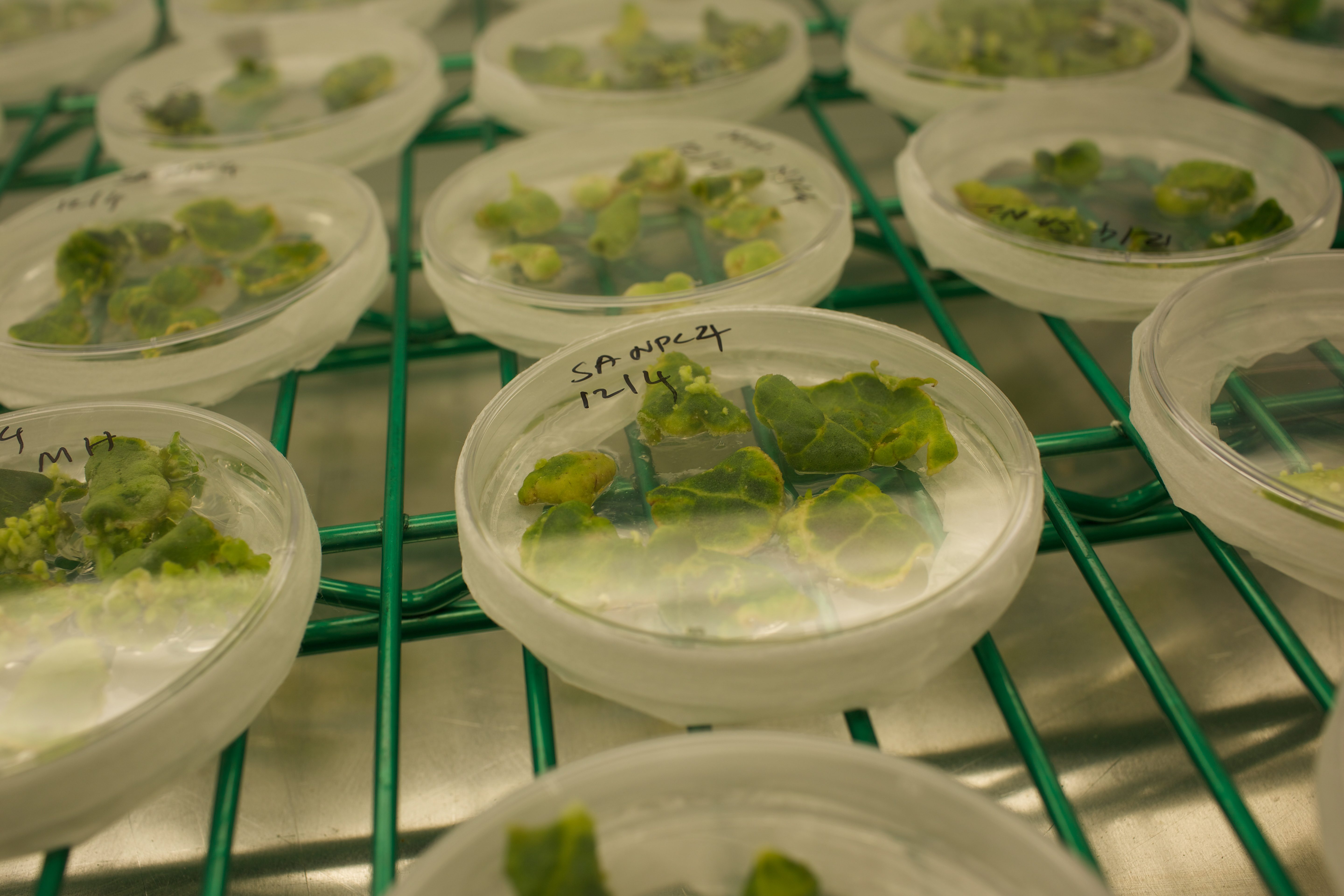Reduced plant growth found in double mutants by RIPE researchers
A team from Louisiana State University (LSU) has been experimenting with two important carbonic anhydrases in the plant Arabidopsis thaliana, namely αCA2 and βCA4.1. These proteins could have an important role in photosynthesis and plant defense mechanisms. The proteins are vital to forming a CO2 gradient across plant cell walls, so in theory removing or altering them should have an adverse effect on plant growth.
A study was conducted with the goal of learning more about the way these carbonic anhydrases impact photosynthesis, and to eventually use this new information to improve the state of agriculture. The study took place in a greenhouse and revolved around the photosynthesis rates of double mutants, organisms which have had two of their genes altered or removed instead of just one- in this case, both αCA2 and βCA4.1. The results of this study revealed that, while removing either the αCA2 or the βCA4.1 anhydrase on its own does not have any observed effect on photosynthesis, removing both of them hinders it and thus plant growth as a whole. The full findings were published in Frontiers in Molecular Biosciences.

Plants felt the greatest impact of missing αCA2 and βCA4.1 proteins when CO2 conditions were low. But according to Hiruni Weerasooriya, a former postdoctoral researcher at LSU and lead author on the paper, these results could have useful impacts on agriculture even as CO2 levels gradually increase in the future.
“If you could overexpress these proteins in a plant line, they might have better performance under high CO2 conditions, which is what we’re going through now,” said Weerasooriya, although she specifies that more testing does need to be done to see the full impacts.
Although removing one or the other protein didn’t have any immediate observed impact, the proteins still likely have important functions on their own. The αCA2 protein, for example, is not well expressed in the plant’s leaves but is in the trichomes, a part of the plant that was not closely observed in this study, but which is necessary for a plant’s immunity and self-defense. Because of this, Weerasooriya predicts removing αCA2 could have potentially damaging effects on the plant’s immune system.
“If you look at the overall expression of the alpha-CO2, it’s not well expressed in the plant leaves, but it is well expressed in the trichomes and also the flowers. So I’m not so sure if this protein is doing something for the immunity,” explained Weerasooriya, now a postdoctoral researcher at Michigan State University.
Additional rigorous testing will be required in order to fully understand the implications of these results. But taking advantage of these proteins could have a great impact on the future of agriculture.
This work was supported by Realizing Increased Photosynthetic Efficiency (RIPE), an international research project that aims to increase global food production by developing food crops that turn the sun’s energy into food more efficiently, funded from 2017-2023 by the Gates Foundation, Foundation for Food & Agriculture Research, and U.K. Foreign, Commonwealth & Development Office.
This story was written by Violet Moore, RIPE science communication intern.
RELATED RIPE OBJECTIVES
Algal Mechanisms